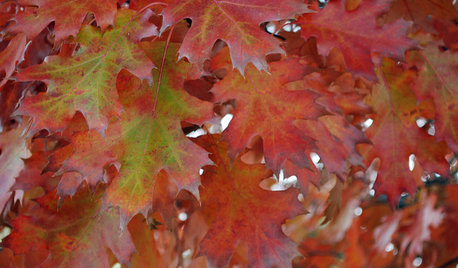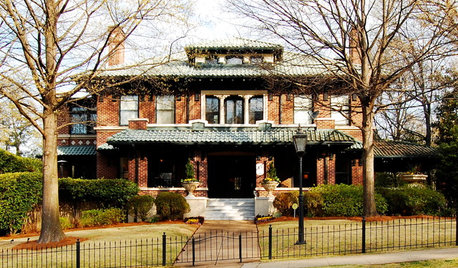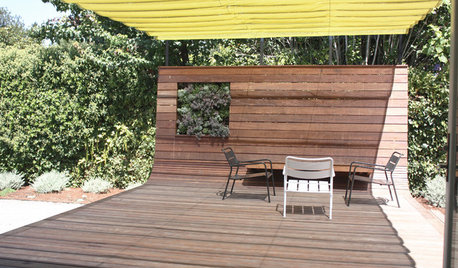how about oak leaves ...
ynot
9 years ago
Related Stories

KITCHEN DESIGNStay Cool About Picking the Right Refrigerator
If all the options for refrigeration leave you hot under the collar, this guide to choosing a fridge and freezer will help you chill out
Full Story
REMODELING GUIDESInterior Brick: Paint it or Leave It?
Here's how to know if covering that brick is a sin or solution
Full Story
FALL GARDENING5 Ways to Put Fall Leaves to Work in Your Garden
Improve your soil and yard the organic way with a valuable garden booster that grows on trees
Full Story
GARDENING GUIDES6 Healthy Ways to Handle Fallen Leaves
Once nature's beautiful bounty is spent, these ecofriendly strategies for leaves will put your yard in the clear
Full Story
LAUNDRY ROOMSRoom of the Day: The Laundry Room No One Wants to Leave
The Hardworking Home: Ocean views, vaulted ceilings and extensive counter and storage space make this hub a joy to work in
Full Story
ARCHITECTUREStates of Style: Alabama’s Icons Leave Their Mark
In the first of a new series, discover the natural beauty, the architectural icons and some of our favorite homes deep in the heart of Dixie
Full Story
GARDENING GUIDESNew Ways to Think About All That Mulch in the Garden
Before you go making a mountain out of a mulch hill, learn the facts about what your plants and soil really want
Full Story
DECKSA Family-Friendly California Yard Wises Up About Water
Pavers and unthirsty plants replace Kentucky bluegrass in a Menlo Park landscape for a family of 4
Full Story
GARDENING GUIDESTree Care: Common Tree Diseases and What to Do About Them
Learn to recognize trees that may be affected by diseases or pests so you can quickly take action
Full Story
WORKING WITH PROSWhat Do Landscape Architects Do?
There are many misconceptions about what landscape architects do. Learn what they bring to a project
Full StoryMore Discussions







cold_weather_is_evil
toxcrusadr
Related Professionals
Allentown Landscape Architects & Landscape Designers · Edmond Landscape Architects & Landscape Designers · Dinuba Landscape Contractors · Galt Landscape Contractors · Holland Landscape Contractors · Lady Lake Landscape Contractors · Lees Summit Landscape Contractors · Milford Mill Landscape Contractors · New Braunfels Landscape Contractors · Porterville Landscape Contractors · Saint John Landscape Contractors · Salem Landscape Contractors · West Chicago Landscape Contractors · Coatesville Decks, Patios & Outdoor Enclosures · Hayward Decks, Patios & Outdoor Enclosureslazy_gardens
Lloyd
toxcrusadr
Kimmsr
toxcrusadr
ynotOriginal Author
Kimmsr